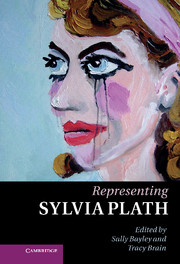Book contents
- Frontmatter
- Contents
- Illustrations
- Notes on contributors
- Acknowledgements
- Abbreviations
- Introduction
- Part I Contexts
- Chapter 1 ‘Mailed into space’
- Chapter 2 ‘The photographic chamber of the eye’
- Chapter 3 ‘O the tangles of that old bed’: fantasies of incest and the ‘Daddy’ narrative in Ariel
- Chapter 4 Plath and torture: cultural contexts for Plath’s imagery of the Holocaust
- Part II Poetics and composition
- Part III Representation
- Bibliography
- Index
- References
Chapter 2 - ‘The photographic chamber of the eye’
Plath, photography and the post-confessional muse
from Part I - Contexts
Published online by Cambridge University Press: 07 September 2011
- Frontmatter
- Contents
- Illustrations
- Notes on contributors
- Acknowledgements
- Abbreviations
- Introduction
- Part I Contexts
- Chapter 1 ‘Mailed into space’
- Chapter 2 ‘The photographic chamber of the eye’
- Chapter 3 ‘O the tangles of that old bed’: fantasies of incest and the ‘Daddy’ narrative in Ariel
- Chapter 4 Plath and torture: cultural contexts for Plath’s imagery of the Holocaust
- Part II Poetics and composition
- Part III Representation
- Bibliography
- Index
- References
Summary
Although Plath’s visual world is becoming better known, little has been done to recognize the archive of domestic and vernacular portraiture her writing animates and explores. There are several reasons for neglect of the varied, inter-mediated, inter-textual world of photographic materials. Considering the immense scale of archived photographs available to scholars of Virginia Woolf or Robert Lowell – canonical writers to whom Plath is often compared – Plath photographs at institutional sites are limited and diffuse. Photographs in primary collections number in the dozens rather than hundreds. There is no synoptic archival image bank; many photographs of Plath herself are duplicated across various collections; copies appearing in biographies often repeat, often without attribution or dating, so they tend to float free from interpretive contexts. While the study of photography and literature has taken off in recent years, a writer’s personal or public photographic collections are still understood to constitute ‘ephemera’ of artistic bibliography – in nineteenth-century usage the ‘fluttering’ image – compared to the holographs, manuscripts or drafts, for which scholars have established genetic models and interpretive procedures. In addition, Plath’s scrapbooks and albums, potentially rich quarry for studying conjunctions of words and images in the writer’s own hand, raise particularly complex issues of archival preservation; once disassembled, as Plath’s scrapbooks have been, it is difficult for scholars to reconstruct the ‘little books’ of photos and script exactly as the maker had intended them.
- Type
- Chapter
- Information
- Representing Sylvia Plath , pp. 32 - 53Publisher: Cambridge University PressPrint publication year: 2011



